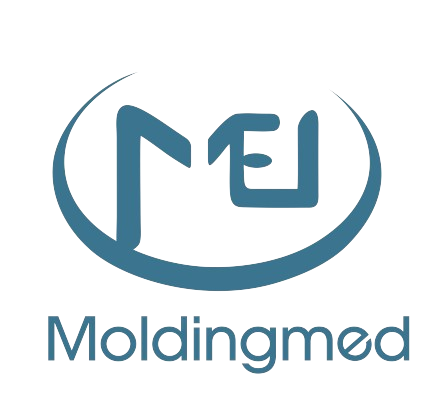Injection Molding:Revolutionizing Plastic Manufacturing
Introduction
In this article, we'll explore the fascinating world of injection molding, a revolutionary technique that has transformed the plastic manufacturing industry. From its inception to the latest advancements, we'll delve into the process, benefits, applications, and future trends of injection molding. So, let's dive in and discover how this remarkable method has shaped the world around us.
What is Injection Molding?
Injection molding is a manufacturing technique that encompasses the injection of melted material, usually plastic, into a cavity within a mold. Once the material solidifies, it is ejected from the mold, resulting in the creation of a precise and durable product. This highly versatile technique allows for the mass production of complex shapes with excellent dimensional accuracy.
The Process of Injection Molding
The injection molding process consists of several key steps:
Clamping: The mold halves are securely closed, ensuring the mold cavity is airtight.
Injection: The molten material is injected into the mold cavity under high pressure.
Cooling: The material cools and solidifies within the mold, taking the shape of the cavity.
Ejection: The mold opens, and the product is ejected, ready for further processing or use.
Benefits of Injection Molding
Injection molding offers numerous advantages, making it a preferred choice in various industries:
Cost-effective: Injection molding enables high-volume production, resulting in lower unit costs.
Design flexibility: Complex geometries, intricate details, and undercuts can be easily achieved.
Rapid production: The fast cycle times allow for quick turnaround and increased productivity.
Consistency and repeatability: Injection molding ensures consistent part quality with minimal variation.
Wide material selection: A vast range of thermoplastics can be used, offering diverse properties.
Enhanced strength and durability: The final products exhibit excellent structural integrity.
Applications of Injection Molding
Injection molding finds applications across numerous industries, including:
Automotive: Production of interior components, exterior body parts, and precision-engineered parts.
Consumer Goods: Manufacturing of consumer electronics, appliances, and household items.
Medical: Creation of medical devices, laboratory equipment, and disposable components.
Packaging: Production of bottles, containers, caps, and other packaging materials.
Aerospace: Manufacturing of lightweight components, including aircraft interior parts.
Electronics: Production of connectors, switches, housings, and other electronic components.
Types of Injection Molding Machines
Injection molding machines come in various types, each suited for specific requirements:
Hydraulic Machines: Versatile and widely used, offering high pressure and excellent control.
Electric Machines: Energy-efficient and precise, ideal for cleanroom environments.
Hybrid Machines: Combining hydraulic power with electric precision for optimized performance.
Two-Shot Machines: Capable of injecting two different materials or colors in a single cycle.
Vertical Machines: Suitable for over molding, insert molding, and other specialized applications.
Choosing the Right Injection Molding Machine
When selecting an injection molding machine, several factors should be considered:
Production volume: Determine whether a high-speed or high-capacity machine is required.
Part complexity: Consider the mold design, number of cavities, and material flow requirements.
Material selection: Match the machine's capabilities with the desired material properties.
Automation needs: Assess the need for automation features, such as robotics and conveyors.
Cost considerations: Analyze the initial investment, maintenance costs, and operational efficiency.
Common Materials Used in Injection Molding
Injection molding supports a wide range of materials, including:
Polypropylene (PP): Offers excellent chemical resistance, impact strength, and low cost.
Polyethylene (PE): Known for its flexibility, toughness, and moisture resistance.
Acrylonitrile Butadiene Styrene (ABS): Provides a balance of strength, rigidity, and heat resistance.
Polycarbonate (PC): Offers exceptional optical clarity, impact resistance, and heat tolerance.
Nylon (PA): Known for its strength, abrasion resistance, and ability to withstand high temperatures.
Polyethylene Terephthalate (PET): Commonly used for packaging applications, offering clarity and strength.
Design Considerations for Injection Molding
When designing parts for injection molding, certain considerations can optimize the manufacturing process:
Draft angles: Incorporate draft angles to facilitate part ejection from the mold.
Wall thickness: Maintain uniform wall thickness to ensure proper material flow and minimize defects.
Ribs and gussets: Reinforce the structure with ribs and gussets to enhance strength.
Gate placement: Strategically position the gate to minimize flow lines and improve aesthetics.
Undercuts and threads: Plan for additional mold features to accommodate undercuts and threads.
Tolerance and shrinkage: Account for material shrinkage and specify tolerances accordingly.
Quality Control in Injection Molding
Ensuring quality in injection molding involves rigorous control measures:
Mold maintenance: Regularly inspect and maintain molds to prevent defects and optimize performance.
Process monitoring: Employ sensors and monitoring systems to detect deviations and ensure consistency.
Material testing: Conduct material analysis and testing to verify properties and quality standards.
Dimensional inspection: Use precision measurement tools to verify part dimensions and tolerances.
Statistical process control: Implement statistical analysis to identify process variations and improve stability.
Troubleshooting Common Issues in Injection Molding
Injection molding may encounter several challenges, including:
Sink marks: Indentations or depressions on the surface caused by shrinkage variations.
Warping: Deformation or bending of the part due to uneven cooling or internal stresses.
Flash: Excess material that escapes the mold and forms thin, unwanted protrusions.
Short shots: Incomplete filling of the mold cavity, resulting in incomplete parts.
Jetting: Poor surface finish caused by high-speed material flow.
Environmental Impact of Injection Molding
As sustainability becomes increasingly important, efforts are being made to minimize the environmental impact of injection molding:
Recycling: Promote the use of recycled materials and implement recycling programs.
Energy efficiency: Optimize machine operation to reduce energy consumption.
Reduced waste: Implement lean manufacturing practices to minimize material waste.
Biodegradable materials: Explore alternatives to traditional plastics, such as biodegradable polymers.
Emissions control: Employ filtration and control systems to minimize air and water pollution.
Innovations in Injection Molding Technology
Advancements in injection molding technology continue to push the boundaries of what is possible:
3D Printing: Integration of 3D printing with injection molding for prototyping and customization.
Micro-Injection Molding: Precise molding of small and intricate parts for various applications.
Multi-Material Molding: Simultaneous injection of different materials to create complex structures.
Industry 4.0: Integration of automation, data analytics, and AI for smart manufacturing.
Sustainable Materials: Development of eco-friendly materials and bio-based polymers.
Future Trends in Injection Molding
Looking ahead, several trends are shaping the future of injection molding:
Digitalization: Increased connectivity and data-driven decision-making for optimized processes.
Smart Manufacturing: Integration of IoT devices, sensors, and predictive maintenance.
Advanced Materials: Development of high-performance materials with enhanced properties.
Automation and Robotics: Further integration of robots for increased efficiency and productivity.
Additive Manufacturing: Continued exploration of hybrid approaches combining 3D printing and injection molding.
Conclusion
Injection molding has revolutionized plastic manufacturing, enabling the mass production of complex and precise products with exceptional efficiency and quality. From automotive components to medical devices and consumer goods, this versatile technique has found its place in various industries. As technology continues to advance, injection molding will evolve, paving the way for sustainable practices, innovative materials, and smart manufacturing. Embrace the possibilities of injection molding and unlock new horizons of production.
Frequently Asked Questions (FAQs)
<span style
TEL: +86 18957607029
ADD:369# XinJiang Rd., Xinqian Street,
Huangyan Taizhou, Zhejiang, P.R China
E-MAIL:sinosales3@moldingmed.com
ABOUT US
Youtube



